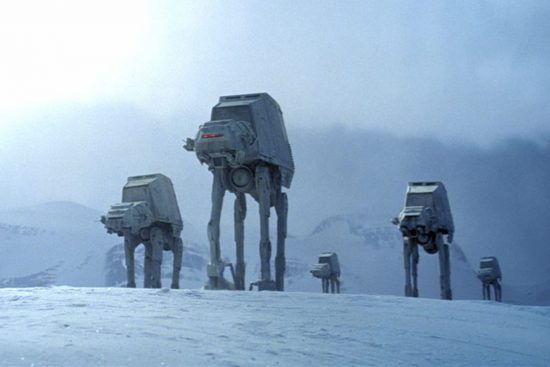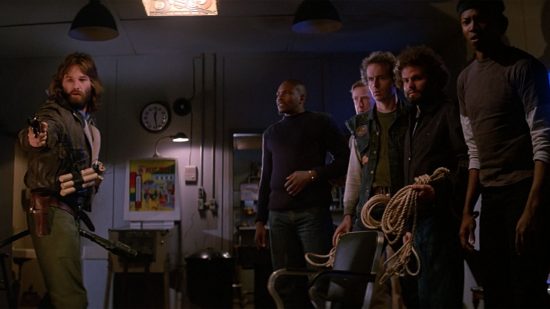How Movies Make the Most of Winter Settings
Most blockbuster films come out during summer—peak time for social activities, and the season when everyone seems happiest. Accordingly, most movies that want to evoke positive emotions are set in summer, spring, or early fall, and when a movie is set in the thick of winter, it makes the scenery that much more dramatic.
A backdrop of ice and snow, characters bundled in thick coats and hats, and the presence of a wood-burning stove all lend themselves to an entirely different atmosphere—and if used correctly, it can instantly elevate a film.
Winter and Holidays
The most common association people have with winter, as it relates to movies, is the Christmas and winter holiday season. Most holiday movies and specials are, appropriately, set during winter, complete with a snowy backdrop and holiday decorations in every home and on every building. This makes holiday movies instantly recognizable—even when the holiday celebrations aren’t the primary focus of the movie, like in Gremlins or Die Hard. Here, the winter setting is used to showcase and enhance the holiday, even as a secondary characteristic of the movie; depending on the nature of the film, this can instantly make the events and characters more sentimental, more nostalgic, or outright “cozier.”
Establishing a Setting
Winter can also be used to establish a setting. Some areas experience harsh winters, extending well into traditional spring and fall months, while other areas experience little to no snowfall and only minimal temperature changes. In areas used to low temperatures and icy conditions, life is different; and showcasing these areas in the thick of whiteout conditions can add a lot to the characters and the story. Take, for example, Fargo, which highlights the mannerisms, regional accents, and habits of native Minnesotans.
Forcing Enclosure
The harsh cold and prohibitive conditions of winter weather can also be used as a good excuse to force people into close-quarters conditions with each other. Occasionally, this is used as a way to explore interpersonal relationships that might have gone neglected if the individuals in those relationships had the distractions or pleasures of open summer weather. More commonly, this is used as a way to explore the fears and anxieties of isolation, resulting in horror. In Misery, famed novelist Paul Sheldon is trapped with a crazed fan after crashing during a blizzard. In The Shining, writer and caretaker Jack Torrance slowly goes mad after being trapped in the Overlook Hotel with his family due to extreme winter weather. In The Thing, Antarctica represents winter weather conditions as members of a research crew deal with paranoia; everyone is stuck indoors with each other, and everyone knows at least one among them is secretly a murderous alien.
Man vs. Nature
Winter can also serve not as an enclosing mechanism to pit human characters against an opponent, but as the opponent itself. Faced with such harsh conditions, winter can become a character in its own right—and a central antagonist in the narrative. These stories are rarer, since winter is more commonly used as a setting, but they can make a dramatic impact. In Alive, based on a true story, a plane crash forces a Uruguayan rugby team to make some tough decisions to ensure their own survival. In The Grey, another airplane crash (sensing a theme?) pits a team of oil workers against the forces of winter—and also a pack of wolves.
Dire Straits
Rather than being the central feature, winter can sometimes serve as a representation of the situation a character is in. If you see a heroic and brave character shivering, bundled up in the cold, they suddenly seem less powerful, less capable, and less confident. This is used to great effect in The Empire Strikes Back, where an opening battle sequence on the winter-dominated planet of Hoth makes it clear that our near-immortal protagonists from Star Wars are now in deep trouble. It sets a dark tone for the entire film, illustrating just how much of a predicament the Rebel Alliance is in.
Color and Contrast
It’s also worth noting that in many of these movies, the darkness of winter skies and bright white of winter snow can be used for playful and stark color contrasts. For example, a dark red bloodstain seems far more unsettling and intimidating when contrasted with bright, white snow than on something like asphalt or concrete.
Summer continues to be the season of choice for most blockbusters, and for good reason, but winter offers too many stylistic choices and story opportunities to ignore. Outside of holiday nostalgia, winter is mostly abused for the sake of evoking gloom, horror, and anxiety, but its unique coloration and sheer power over human characters make for some unique storytelling.











